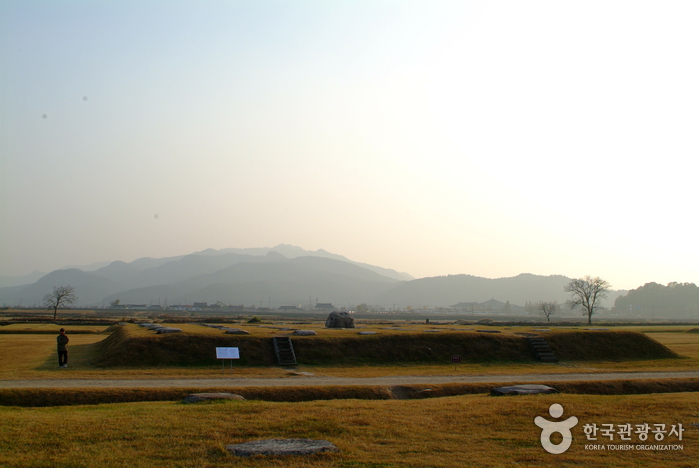Discover the Historic Splendor of Gyeongju Hwangnyongsa Temple Site
Welcome to Gyeongju Hwangnyongsa Temple Site, a captivating tourist destination that takes you back in time to the glorious Silla Era. Located in front of Bunhwangsa Temple in Guhang-dong, Gyeongju, this site was once home to the nation’s largest temple and a treasure trove of Buddhist artifacts. Let’s delve into the rich history, cultural significance, and architectural wonders of Hwangnyongsa Temple Site.
Ancient Origins and Spiritual Significance
In 553, King Jinheung commissioned the construction of Hwangnyongsa Temple on a field east of the royal compound. Originally intended as a palace, the king changed his plans when reports of a yellow dragon sighting on the building site emerged. Hence, the temple was named Hwangnyongsa, meaning “Temple of Yellow Dragon.” The temple’s completion in 569 marked the beginning of an era where it became the center of state-sanctioned Buddhism in Silla.
During the Tang dynasty, monk Jajang had a divine encounter in China, where a god informed him that the yellow dragon guarded Hwangnyongsa Temple under the orders of Brahma, the Creator. Inspired by this encounter, Jajang persuaded Queen Seondeok to construct a magnificent nine-story pagoda. The completion of this pagoda, designed by master architect Abiji, was believed to strengthen the royal cause and bring neighboring states to surrender and pay tribute.
The Legendary Pagoda and Royal Unity
Legend has it that on the night before the columns of the pagoda were to be erected, Architect Abiji of Baekje had a prophetic dream of his country’s fall. Terrified, he abandoned the project. However, an old monk and a man of great strength suddenly materialized from the main hall, effortlessly erected the columns, and vanished. This extraordinary event convinced Abiji to resume the construction, accepting it as the will of the gods.
The completion of the nine-story pagoda coincided with Queen Seondeok’s successful unification of the Three Kingdoms. Many scholars attributed this unification, at least in part, to the pagoda’s presence. Hwangnyongsa Temple also housed two of the three treasures of Silla, attracting esteemed monks and even kings who sought enlightenment through Buddhist teachings.
Archaeological Discoveries and Restoration Challenges
In 1969, during excavation work, the massive foundation stones of the sermon hall, auditorium, and pagoda were unearthed, revealing the remarkable layout of the temple grounds. Over eight years of archaeological excavations, approximately 40,000 ancient artifacts were discovered, shedding light on the temple’s grandeur. However, due to a lack of historical clues about the temple’s upper design, restoring the temple to its original glory remains practically impossible.
Spanning approximately 70 acres, Hwangnyongsa Temple Site was eight times larger than the renowned Bulguksa Temple. Exploring the archaeological remnants will give you a sense of the temple’s vastness and importance during the Silla Era.
How to Get There
If you’re traveling from Seoul, head to the Seoul Express Bus Terminal and take a bus to Gyeongju Bus Terminal. From there, you can easily reach Hwangnyongsa Temple Site by taking Bus No. 10, 11, 15, 16, 16-1, 17, 18, 100, 150, or 277-1, and alighting at either Bunhwangsa Temple or Gyeonggosageori Intersection Bus Stop.
Embark on a journey through time at Gyeongju Hwangnyongsa Temple Site, where the remnants of an ancient temple and its spiritual significance await. Immerse yourself in the history, culture, and architectural wonders of this remarkable UNESCO World Heritage site.

